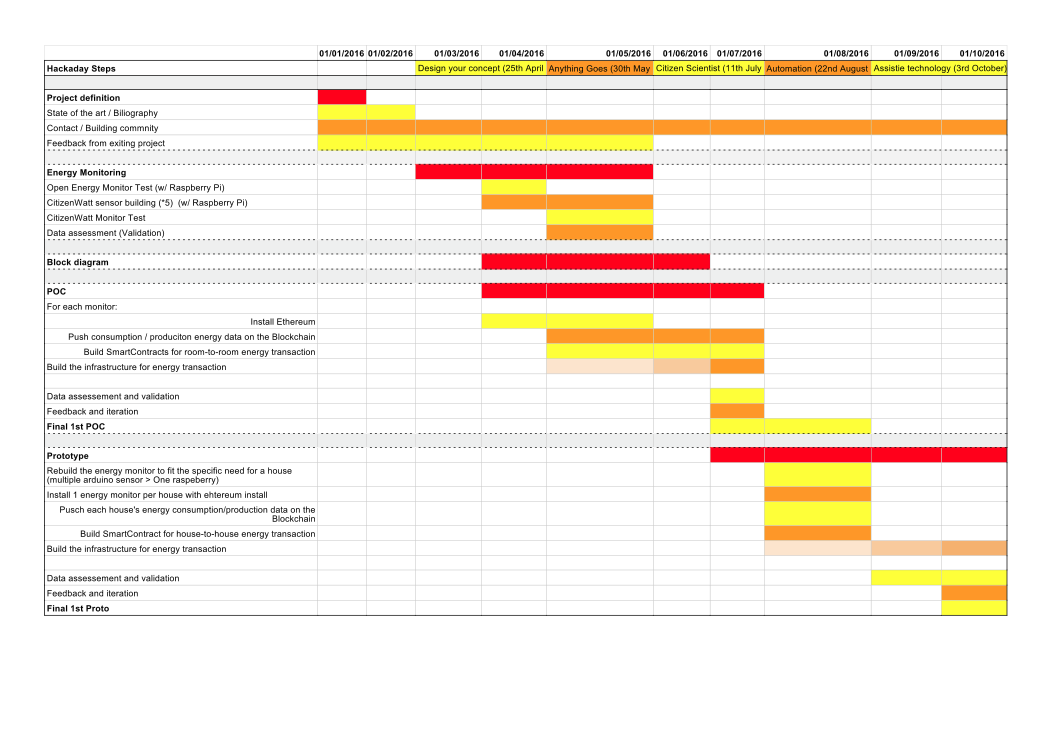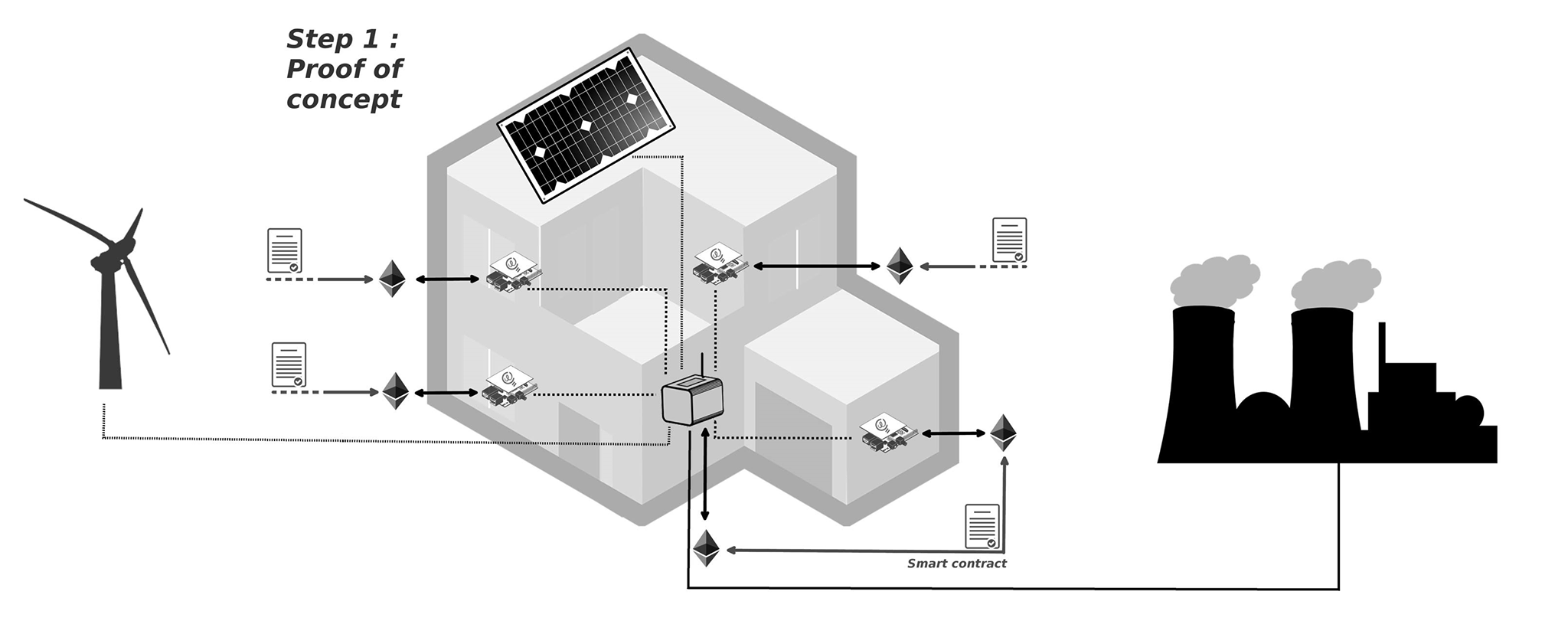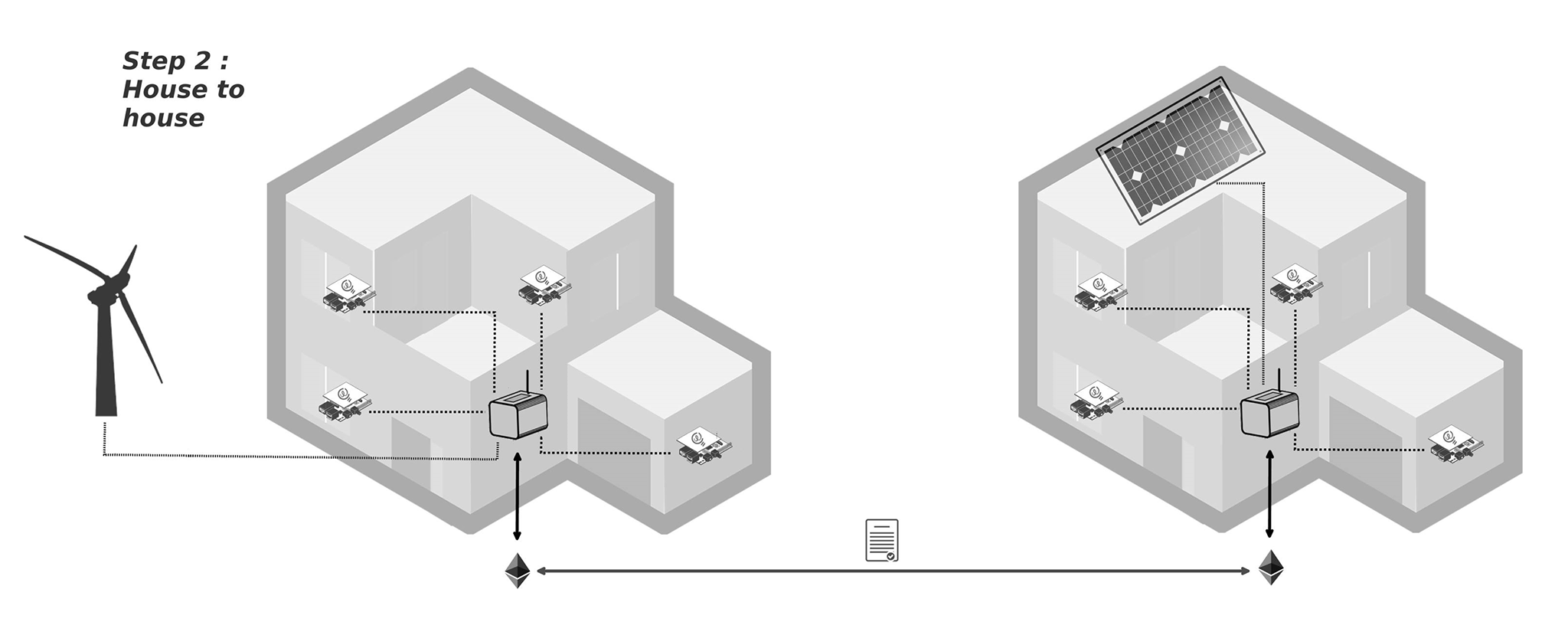As winter and the deadline for the first challenge are coming, it is time to state how advanced we are today (2016-07-19). Moreover it's been a while since we haven't post something about our advances its because... we're trying to progress !
2016-07-19
Technically
- We've installed Ehtereum node on independant Raspberry Pi II and III and made them communicate with a local ethereum blockchain
- We've made some basic transaction on the local blockchain between the Raspberry PI
- We've code a energy "smart contract" that has not been tester yet
- We've finished soldering on the CiizenWatt PCB, unfortunaltely it doesnt't work yet (we've got some trouble with it... we'll explain later in antoher log)
Functionnally
- We are looking for experimental territories to test in real conditions
- We've found another playground remotely from Lyon at the @Louis Villard parents' house engaged in a transition process
- We still don't understand why our CitizenWatt are not working
- Open Energy Monitor is functional but suffers from weak sensitivity and consistance in consumption data.
The related documentation :
- for the CitizenWatt
- for the installation of Ethereum on a OpenEnergyMonitor
- for the SmartContract
Lot of work has been lead by @Sam @Louis Villard and @Paul Fl on soft and hardware.
Extensive work has been lead by @Nicolas Loubet @Rieul Techer @Aude Omn and @xavier on the ecosystem and community building around te DAISEE project.
Carry on following the feed... more logs to come.
2016-04-25
Technically
- We can measure and log current thanks to the current clamp
- We installed the Ethereum client on a Raspberry Pi
- We can perform some basic smartcontracts
Functionally
- We have the building that will serve as playground for the project (La M[y]ne, the physical space hosting la Paillasse Saône, eco hacklab in Lyon, France)
- We are in the process of building 5 pairs of Citizen-Watt + Raspberry Pi
We will use a Citizen Watt board to measure and tokenize the energy production and consummation : this is basically a current clamp connected to an home made customized Arduino (ATMega368 based PCB).
On a Raspberry Pi, we will manage the blockchain capabilities (via Ethereum), the smart contract between actors, allowing a smart and decentralized governance.
Planning of the project

Step 1
We use each room of a house to act as various actors in a simulated energy market.

Step 2
We scale up the POC to a few houses to create a real small energy market, some actors producing energy, some other consuming, and some actors doing both.

Discussions
Become a Hackaday.io Member
Create an account to leave a comment. Already have an account? Log In.